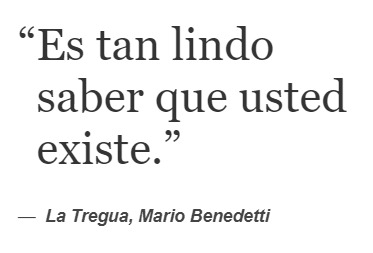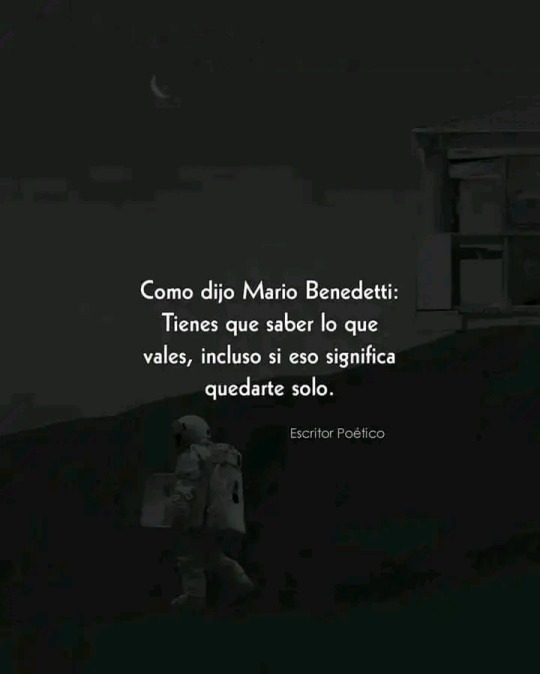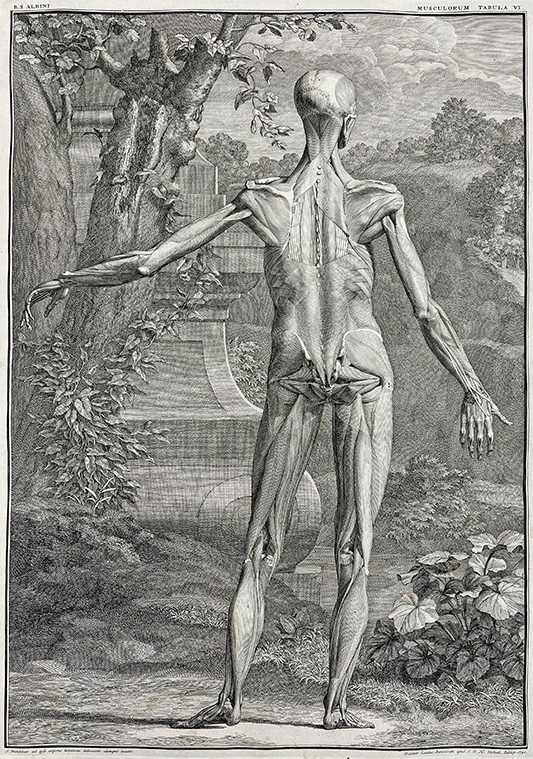#benedetti
Text
"Ojala nunca hayas leído nada de lo que te he escrito, porque me destrozaría saber que apesar de eso no me has buscado."
~ Mario Benedetti.
#mario benedetti#Benedetti#frases de amor#frases#amor#citas#citas de escritores#frases tristes#citas de amor#frases de desamor#notas#desamor#leído#tristeza#notas tumblr#nota triste
521 notes
·
View notes
Text

#cosas que escribo#mario benedetti#benedetti#mis fotos#la tregua#libro#frases de libros#lindo#existe#ud#usted#saber#huir#amor#mi amor#Sebastián
116 notes
·
View notes
Text
Me llevas al infinito
en el océano de tus labios
me erizas la piel
del cuello
si te acercas
con las palabras
que sólo tú sabes
¿será normal
que te vea
y siempre tenga ganas
de estarte cogiendo?
Acuarela mexicana, Quetzal Noah
#cita#frases#letras#poesía#booklover#arte#textospropios#libros#amistad#nostalgia#romance#benedetti#literatura#jaime sabines#so hot 🔥🔥🔥#caliente#enamorados
267 notes
·
View notes
Text
Tú allá afuera formando galaxias con tan solo sonreír.
Mario Benedetti
#mario benedetti#benedetti#literatura#literatura en español#literatura estrangeira#literatura uruguaia#poesía#poesia#poesía uruguaya#poesía en español#español#cita#citas#citação#citações#citas en español#trechos#trechos en español#amor#escritores#escritores uruguaios#escritores en español#escritos#poemas#poemas de amor#poemas en español#citación#citacion#fragmentos poéticos#poetas
90 notes
·
View notes
Text
Te quiero sin mirar atrás
Te quiero mansamente, entre las sombras de las falsas ilusiones.
Te quiero como para leerte cada noche, como mi libro favorito quiero leerte, línea tras línea, letra por letra, espacio por espacio.
Te quiero para tomarte de la mano bajo el firmamento y mostrarte los te amo escondidos entre las estrellas.
Te quiero sobre las hojas de otoño, hablando de nada pero a la vez de todo y, en un arranque de locura, beber tus lágrimas mientras desfallezco en tus labios.
Te quiero para buscarte entre las frases no dichas, entre los pensamientos enterrados, entre las maneras complicadas quiero encontrarte y después no dejarte.
Te quiero como para llevarte a mis lugares favoritos y contarte que es ahí donde me siento a buscarte en la niebla de miradas que no son tuyas, pero aún así te busco.
Te quiero para volvernos locos de risa, ebrios de nada y pasear sin prisa por las calles, eso sí, tomados de la mano, mejor dicho, del corazón.
Te quiero como para sanarte, y sanarme, y sanemos juntos, para remplazar la heridas por sonrisas y las lágrimas por miradas, en donde podremos decir más que en las palabras.
Te quiero por las noches en las que faltas, te quiero como para escuchar tu risa toda la noche y dormir en tu pecho, sin sombras ni fantasmas, te quiero como para no soltarte jamás.
Te quiero como se quiere a ciertos amores, a la antigua, con el alma y sin mirar atrás.
Mario Benedetti
#jm silva#josesilva3001#poesía#poema#poeta#poets on tumblr#poesia#poetry#josé miguel silva#escritores mexicanos#mario benedetti#Benedetti#poetas#poetas enamorados
219 notes
·
View notes
Text






"Kestrel"
McFarlane ShipDesign / Bassan & Benedetti
#art#design#superyacht#megayacht#ocean#luxury yacht#sea#boat#ship#travels#kestrel#explorer yacht#renovation#yacht concept#render#billionaire lifestyle#todd mcfarlane#bassan#benedetti
48 notes
·
View notes
Text
"Sentí que me miraba con un amor, un amor que seguramente me inventé yo".
Mario Benedetti.
#frases#quotes#libros#literatura#quote#literature#vida#amor#amantes#Desamor#Ilusión#Melancolía#Tristeza#Amar#mario benedetti#Benedetti
56 notes
·
View notes
Text
"Quizá no era amor, tal vez, era esa pequeña necesidad de sentir algo, diferente. Algo que marcara mi vida por completo"
#cosas de la vida#parejas#amor no correspondido#decir adios#frases#mario benedetti#benedetti#doloroso#dejarte ir#enamorarse#citas#te amo mucho#te quiero pero debo dejarte#dejar de sentir#alejarme#dejarte de amar#dejar atras#dejarlo ir#dejar ir#último adiós
8 notes
·
View notes
Text
"Tengo la horrible sensación de que pasa el tiempo y no hago nada, y nada acontece, y nada me conmueve hasta la raíz"
La tregua- Mario Benedetti
30 notes
·
View notes
Text

20 notes
·
View notes
Text

#mis fotos#mario benedetti#benedetti#quedarme sola#sola#valor#amor propio#autovaloración#valorarse#soledad
46 notes
·
View notes
Text
Irse de vez en cuando
Está bien irse de vez en cuando. No tiene nada de malo irse cuando uno siente que no está avanzando. Está bien irse por un rato. Emanciparse de la rutina y contemplarse a sí mismo en otro café, otro clima, otras páginas no escritas. Perderse en otra ciudad probando nuevas cervezas. Si uno aprende a ver que las casualidades son lo menos casual que nos ocurre no dudaría de las señales. La soledad también es una agradable compañera que nos enseña la mejor canción que habita en nuestros suspiros. Está bien irse de vez en cuando y respirar el aire de otros parques, deambular entre bazares de libros, escuchar las historias de los que viven de sus recuerdos y escribir lo que se sueña para ver si la valentía seduce a la suerte. Está bien irse por un rato para tener una visión distinta desde otra ventana de las mismas estrellas.
Yo aún, no aprendo a quedarme donde mismo, por eso me digo que, está bien irse por un rato.
¿Cómo volverse mochilero? Quetzal Noah
#amor#arte#letras#frase#cita#citaspropias#viaje#viajes#lectura#roadtrip#mochila#mochilazo#mochileros#borges#cortazar#benedetti#reflexiones#escribir#escribir bonito#mensaje positivo#backpackers#quetzalnoah#aventura
661 notes
·
View notes
Text
Más que besarla,
más que acostarnos juntos;
más que ninguna otra cosa,
ella me daba la mano,
y eso era amor.
Mario Benedetti - La Tregua
#mario benedetti#benedetti#literatura#literatura estrangeira#uruguai#español#poesia#poesía#poesia e poetas#poesía y poetas#citas#citas en español#citas en tumblr#citação#citações#cita#citas de libros#citas de livros#escritores estrangeiros#escritores#escritos#trechos#trechos de livros#trechos en español#libros#escritores en español#poetas#poetas estrangeiros#poetas uruguaios#citacion
209 notes
·
View notes
Text
"Me gustaría alguien que no me necesite para nada, pero que me quiera para todo"
-------Mario Benedetti
#frases#citas#pensamientos#vida#dolor#tristeza#sentimientos#amor#noche#soledad#mario benedetti#benedetti#escritos#oscuridad#letras#recuerdos#desamor
17 notes
·
View notes
Text





Guest Post from John Martin Rare Book Room
Hardin Library for the Health Sciences
When classes visit, I usually set out several books on a particular subject or time period. Students often ask why some of the books are so much larger than others, especially if one of our "elephant" books is out - folios ranging roughly from 55 to 100 cm (22 to 39 in).
This got me thinking about just what our largest and smallest books might be. As of January 2023, the largest and smallest bound books in the JMRBR collection are the 1747 Tabulae sceleti et musculorum corporis human (76 cm/30 in) by Bernhard Siegfried Albinus (1697-1770) and the 1527 Anatomice, sive Historia corporis humani (11 cm/4 in) by Alessandro Benedetti (ca. 1450-1512), respectively.
ALBINUS, BERNHARD SIEGFRIED (1697-1770). Tabulae sceleti et musculorum corporis humani [Diagrams of the skeleton and muscles of the human body]. Printed in Leiden by Johannes & Herman Verbeek, 1747. 98 pages [40 illustrations]. 76 cm tall.
Let's start with our big book of anatomy. Bernhard Siegfried Albinus was a Dutch physician, anatomist, and professor of medicine who lived during the last half of the 17th century and the first part of the 18th. He was part of a physician anatomist family, along with his father, Bernhard Albinus, and brothers, Frederick Bernhard Albinus and Christiaan Bernhard Albinus.
Albinus started his studies at the University of Leiden at the age of 12. He studied under some of the most famous medical minds of the day, including Bidloo and Boerhaave, and eventually in Paris with Frederik Ruysch and Jacques-Bénigne Winslow. Albinus then succeeded his father as the professor of the practice of medicine at the University of Leiden, while his brother Frederick, succeeded Albinus as the chair of anatomy.
Albinus wrote many works, but none were as famous or controversial as the monumental Tabulae. It took twenty-two years to make and a great deal of Albinus's own money. He worked closely with the artist Jan Wandelaar to create the detailed and occasionally whimsical images in the book.
Albinus was driven to execute his vision for the book and was exacting in his work with Wondelaar. The work became so intense that Wondelaar eventually moved in with Albinus to expedite the process. Unlike many anatomists who published before Albinus, he was interested in creating an idealized form of human anatomy, "homo perfectus." This ideal, as Albinus saw it, meant assembling body parts from different cadavers into a single illustration instead of illustrating a single body.
To help maintain proportion and accuracy, Albinus and Wondelaar developed a hanging grid that was placed in front of the skeletons. To allow for close-up observation to capture finer details, a proportionally smaller grid was placed closer to the skeleton. With Albinus intensely controlling the details of the bodies, some have suggested that Wondelaar must have felt creatively stifled. With Albinus focused on the bodies alone, Wondelaar was then free to express his creativity through the backgrounds.
As can be seen in the illustrations above, he included elements of nature and classical architecture, the most famous of which is his scene including Clara the rhinoceros. Petrus Camper, a contemporary of Albinus and fellow famed Dutch anatomist, was Tabulae's greatest critic. He criticized the book for its method of assembling the "homo perfectus," but mostly for Wondelaar's backgrounds. I suspect Camper was no fun at parties.
BENEDETTI, ALESSANDRO (ca. 1450-1512) Alexandri Benedicti, physici, Anatomice, siue, Historia corporis humani ; ejusdem Collectiones medicinales, seu Aforismi [Anatomice, sive Historia Corporis Humani - Anatomy, or the History of the Human Body]. Printed in Paris by Simon Du Bois, 1527. 167 pages. 11 cm tall.
Now on to our tiny tome, Alessandro Benedetti's Anatomice, sive Historia Corporis Humani from 1527. Benedetti was born around 1450 near Verona, Italy. Unlike Albinus, Benedetti was not born into a medical family but rather a farming family. Regardless, he eventually made his way to Padua and earned his doctorate in medicine.
After practicing for many years in Greece, in 1490 he returned to Padua as the Chair of Anatomy and Surgery. Benedetti's lectures were popular attractions for students, other physicians, and the famous. The Holy Roman Emperor, Maximilian I (to whom Anatomice was dedicated) attended a lecture in which Benedetti dissected an abdomen. Along with many medical works, he authored a report on the First Italian War (1494-1495) recounting his observations as surgeon general for the League of Italian Princes (the Italian army taking on the invading French army of Charles VIII).
First printed in Venice in 1502, Anatomice, sive Historia Corporis Humani was a hit in the medical community. It deals with many medical and surgical subjects, including gallstones, the opening of the female urethral glands, the passage of the bile into the duodenum, the treatment of syphilis and blennorrhagia (it sounds bad - and it is: excessive discharge of mucus associated with gonorrhea), and a method for safely cutting out bladder stones.
Most notably, Benedetti includes a description of nasal reconstruction by means of a skin flap taken from the arm. The procedure is the same as the one the Branca family practiced in Sicily in the middle of the fifteenth century. The Brancas kept the operation secret and never published it. If this sounds familiar, that's because Tagliacozzi published this so-called "Italian" method in 1597 in his famous De curtorum chirurgia per insitionem which I profiled in the December 2021 newsletter. This method is most often referenced with Taglicozzi, but Benedetti profiled it almost 100 years before him!
Whereas Albinus's book is all about the illustrations, Benedetti's book focuses on the text. But that does not mean it is without fun imagery. The banner image at the top shows a few examples of the many delightful illustrated initials found throughout, except for the initial A which was left unadorned. Seems like an interesting creative choice. Or did something go wrong and the printer needed a quick replacement?
--Damien Ihrig, curator of John Martin Rare Book Room
33 notes
·
View notes
Text

Me parece que la única forma de mantenerme joven es no amargarme.
Mario Benedetti
49 notes
·
View notes